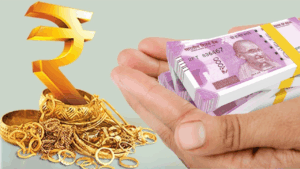
We’ve all been there. You open your inbox hoping for exciting news, only to be bombarded by a flood of shady weight-loss pills, dubious financial offers, or promises from a long-lost relative with a fortune to share. Enter email spam – the digital equivalent of junk mail that’s been around for decades. Get ready to learn the tricks spammers use and how to fight back!
Read our blog post on how to ask for update in email
Section 1: What Exactly Is Email Spam (And Why Does It Matter)?
Think of email spam as unsolicited, mass-mailed messages, often sent by shady bots trying to trick you. It’s more than just annoying; spam can be packed with malware, scams, and attempts to steal your data. Why do they do it? Usually, money. Even a tiny success rate with a huge blast of spam can be profitable for these crooks.
Section 2: A Brief History of Spam
Believe it or not, the first spam email dates back to 1978! The term “spam” itself was inspired by a Monty Python sketch with endless mentions of canned meat. By the early 2000s, spam was a full-blown epidemic, making it necessary for laws like the “CAN-SPAM Act” to try and control it.
Section 3: Spammer Tricks of the Trade
Let’s expose how these pesky spammers operate:
- Botnets: Think of these as armies of infected computers controlled by a spammer to spread emails far and wide.
- Blank Email Spam: Watch out for empty emails! They could contain hidden viruses or exist to identify valid email addresses.
- Image Spam: Spammers hide their text in images to try and sneak past the usual filters.
Read our blog post on How to write a follow up email
Section 4: The Many Faces of Spam
Spam wears many disguises. Here are some common ones to watch out for:
- Miracle Products and Shady Offers: If it seems too good to be true, it probably is!
- Fake Antivirus Warnings: Urging you to click a link to “fix” a nonexistent problem. This is a classic trick to gain access to your system.
- “You’ve Won!” Messages: Sadly, you probably haven’t won a sweepstakes you never entered. It’s a trap to steal your information.
- Malware Delivery: Some spam emails contain straight-up viruses waiting to infect your device
Section 5: Spam vs. Phishing: What’s the Difference?
Phishing emails are even sneakier. They pretend to be from your bank, a trusted company, or even a government agency. Their emails look official and try to trick you into giving up passwords, credit card details, or other sensitive info.
Section 6: Fight Back: How to Protect Yourself
You’re not helpless against the spam tide! Here’s your battle plan:
- Report and Delete: Be vigilant! Trash suspicious emails and report them as spam.
- Filters Are Your Friend: Use spam filters in your email program, and consider adding a third-party filter for extra protection.
- Allowlists: Create a list of trusted senders to ensure important emails reach you.
- Throwaway Emails: Use a separate email address for online forums or less important sign-ups.
- Never Click Suspicious Links: If you don’t recognize the sender, resist the urge!
Read our blog post on writing an email
Conclusion
Spam might be an ongoing battle, but with awareness and the right tools, you can minimize its impact on your inbox. Remember, knowledge is power. Now you’re armed to spot those spammy emails a mile away and focus on the messages that actually matter.
Read our blog post on Email Warmer




